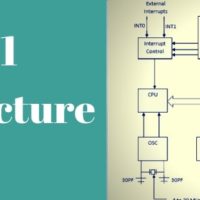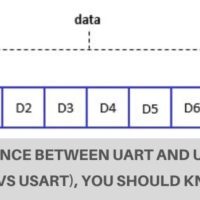
Nowadays there are a lot of devices that use the serial interface for data transmission. When I am talking about the serial interface then there are a lot of serial interfaces are available like I2C, SPI, USB and many more.
But the two oldest serial interfaces RS232 and Rs475 are still alive and used by many devices. The aim of this article to only describe the basic difference between the RS232 and RS485 (RS232 vs RS485). So before going to explain RS232 vs RS485 I want to give a basic introduction of these standards.
RS232:
RS-232 was first introduced in 1960 by the Electronic Industries Association (EIA) as a Recommended Standard. It is used for serial communication transmission of data. It formally defines signals connecting between a DTE (computer terminal), and a DCE (modem).
RS232 defines the electrical characteristics and timing of signals, the meaning of signals, and the physical size and pinout of connectors. The RS-232 standard had been commonly used in computer serial ports and is still widely used in industrial communication devices.
RS485:
It is an extended version of RS232 and good for long-distance. RS-485, also known as TIA-485(-A) or EIA-485.It is a standard that defining the electrical characteristics of drivers and receivers for use in serial communications systems. RS485 supports the multipoint systems and work on the balanced electrical signaling.
The standard is jointly published by the Telecommunications Industry Association and Electronic Industries Alliance (TIA/EIA). Digital communications networks implementing the standard can be used effectively over long distances and in electrically noisy environments. Multiple receivers may be connected to such a network in a linear, multidrop bus. These characteristics make RS-485 useful in industrial control systems and similar applications.
Now comes on the topic and see the difference between RS232 and RS485 (RS232 vs RS485).
Some important difference between the RS232 and RS485
| Parameter | RS232 | RS485 |
| Line configuration | Single-ended | differential |
| Numbers of devices | 1 transmitter 1 receiver | 32 transmitters 32 receivers |
| Mode of operation | Simplex or full-duplex | Simplex or half-duplex |
| Maximum cable length | 50 feet | 4000 feet |
| Maximum data rate | 20 Kbits/s | 10 Mbits/s |
| signaling | unbalanced | balanced |
| Typical logic levels | +-5 ~ +-15V | +-1.5 ~ +-6V |
| Minimum receiver input impedance | 3 ~ 7 K-ohm | 12 K-ohm |
| Receiver sensitivity | +-3V | +-200mV |



